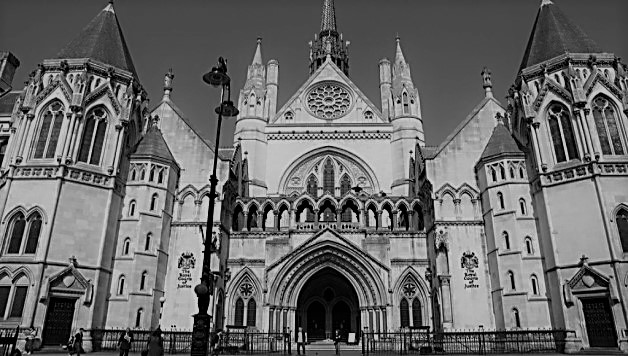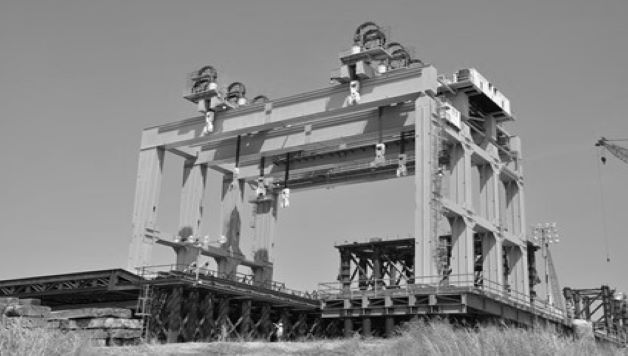The Construction, Forestry, Mining and Energy Union (CFMEU) has copped the maximum available pecuniary penalty for its role in a secondary boycott by Queensland-based construction company J Hutchinson Pty Ltd (Hutchinson), following successful enforcement action by the Australian Competition and Consumer Commission (ACCC).
In a recent decision, Downes J of the Federal Court of Australia imposed a penalty of $600,000 on Hutchinson in respect of contraventions of ss 45E and 45EA of the Competition and Consumer Act 2010 (Cth) (CCA) and a maximum penalty of $750,000 on the CFMEU for its involvement in, and inducement of, those contraventions.
While the amount of these penalties pale in comparison to the maximum penalties recently proposed by the Federal Government in exposure draft legislation, the result is yet another victory for the ACCC in the commercial construction industry. Moreover, Downes J’s particularly critical assessment of the CFMEU’s conduct follows a spate of recent cases in which the trade union has been found to have engaged in wrongdoing under various regulatory regimes.
Interestingly, Downes J also made an adverse publicity order against CFMEU but declined to make orders for injunctions or compliance programs against either party.
Background
In 2020, the ACCC commenced a civil penalty proceeding against Hutchinson and the CFMEU, alleging contraventions of the CCA’s prohibitions on secondary boycotts. The proceeding concerned events that took place at a construction site in 2016. In short, Hutchinson engaged a waterproofing subcontractor, WPI, which did not have an enterprise bargaining agreement (EBA). The CFMEU threatened to engage in industrial action if Hutchinson allowed WPI to continue work on the site. Hutchinson capitulated and WPI was excluded from the site and had its subcontract terminated.
Following a contested trial in relation to whether Hutchinson and the CFMEU had contravened the CCA, Downes J delivered judgment on liability, concluding that:
- Hutchinson had contravened ss 45E(3) and 45EA of the CCA by making an arrangement or arriving at an understanding with the CFMEU containing a provision that Hutchinson would no longer acquire services from WPI and would terminate WPI’s subcontract, and giving effect to that provision; and
- the CFMEU was knowingly concerned in, or party to, Hutchinson contraventions, and had induced those contraventions by threatening industrial action.
For a more detailed summary of Downes J’s liability judgment, please see our recent post.
Penalty Hearing
At a penalty hearing before Downes J in May 2022, the parties made submissions with respect to the appropriate penalties to be imposed on Hutchinson and the CFMEU, as well as other relief, including injunctions, a compliance program, adverse publicity orders and costs.
For Hutchinson’s contraventions, the ACCC sought penalties of $1.2 million, while Hutchinson contended that a penalty of $400,000 was appropriate. For the CFMEU’s contraventions, the ACCC sought penalties of $1.5 million, while the CFMEU contended that a penalty of $250,000 should be imposed.
Those familiar with pecuniary penalties under the CCA would be aware that the penalties sought by the ACCC are relatively low compared to the current maximum available penalties for contraventions of Part IV by corporations (i.e., the greater of $10 million, 3x the benefit derived or 10% of annual turnover). That is because ss 45E and 45EA are specifically carved out from that penalty regime by s 76 of the CCA. Thus, s 76(1A) relevantly provides that the maximum penalty for a contravention of ss 45E and 45EA by a corporation is $750,000 per contravention.
Penalty Judgment
In a penalty judgment delivered in August 2022, Downes J imposed:
- a penalty of $600,000 on Hutchinson in respect of its two contraventions; and
- a penalty of $750,000 on the CFMEU in respect of its two contraventions.
Her Honour also made orders with respect to an adverse publicity order and costs.
Hutchinson’s Penalty
Given the two contraventions in which Hutchinson had been found to have engaged, the theoretical maximum penalty was $1.5 million. However, Downes J considered it appropriate to apply the “course of conduct” principle, explaining that because Hutchinson’s two contraventions were “inextricably interrelated”, they ought to be viewed as a single course of conduct.
Ordinarily, this would lead to the Court imposing a single penalty in respect of that single course of conduct. Curiously, however, Downes J reasoned that the application of the principle meant that there ought to be “a reduction in the penalty sought by the ACCC for each contravention”, in order to avoid a penalty of “oppressive severity”. This approach appears to combine the course of conduct principle and the totality principle (which acts as a “final check” to ensure a proposed penalty is appropriate and not excessive).
In concluding that a penalty of $600,000 was appropriate, Downes J considered that the following matters weighed in favour of a higher penalty:
- the need for general deterrence to ensure the penalty imposed would be sufficiently large to avoid being perceived by others in the construction industry as a “cost of doing business”;
- the need for specific deterrence, given Hutchinson appeared to have regarded the avoidance of the threatened industrial dispute as more important than compliance with the CCA;
- the size and resources of Hutchinson;
- the involvement of a senior employee of Hutchinson; and
- the failure by Hutchinson to express any genuine remorse or contrition.
Downes J also noted that the following factors weighed in favour of a lower penalty:
- the short period over which the conduct took place;
- the lack of evidence as to any loss or damage resulting from the conduct;
- the fact that Hutchinson had not previously engaged in any similar conduct;
- Hutchinson’s attempts to cultivate a corporate culture conducive to compliance; and
- the totality principle, the application of which suggested that the penalties sought by the ACCC would be excessive and greater than necessary to achieve deterrence.
The CFMEU’s penalty
Like Hutchinson, the CFMEU had also been found to have engaged in two contraventions, which implied a theoretical maximum penalty of $1.5 million. However, because the CFMEU’s contraventions were pleaded and determined on the basis that they arose out of the same conduct, Downes J considered that the CFMEU could not be liable for more than one penalty, by virtue of s 76(3) of the CCA (or, alternatively, because of the course of conduct principle). Accordingly, the maximum penalty was $750,000.
In assessing the appropriate penalty to be imposed, Downes J had regard to the following factors:
- the need for general deterrence, to avoid any perception by unions that penalties are insufficient to outweigh the benefits from engaging in secondary boycott conduct (which is damaging to the competitive process);
- the fact the CFMEU’s conduct was “the catalyst or ultimate cause” of the contraventions, serious and deliberate, and part of a wider strategy of requiring subcontractors to have an EBA in defiance of the law;
- previous similar conduct engaged in by the CFMEU, indicating that it is “prepared to disregard the law in order to have its own way”;
- previous findings that the CFMEU had contravened other regulatory legislation, including the Fair Work Act 2009 (Cth), the Building and Construction Industry Improvement Act 2005 (Cth), and the Workplace Relations Act 1996 (Cth);
- the size and resources of the CFMEU, which suggested that a higher penalty would be necessary to achieve deterrence;
- while no senior managers were involved, the union organiser involved was a “senior representative” who had an “important role” in the context of the project;
- the CFMEU’s deficient corporate culture, which was not conducive to compliance, as evidenced by its previous similar conduct, the lack of any attempt to improve its internal systems or training and lack of disciplining the union organiser for the relevant conduct;
- the failure by the CFMEU to express any genuine remorse or contrition; and
- the parity principle, which indicated that the CFMEU ought to receive a greater penalty than Hutchinson, having regard to the CFMEU’s relative culpability, its role in the impugned conduct and its previous similar conduct.
Accordingly, Downes J concluded that it was appropriate to impose the maximum penalty of $750,000 on the CFMEU. Her Honour emphasised that no lesser penalty would be effective at deterring the CFMEU and others in the same position from engaging in future contraventions.
Other relief
In addition to pecuniary penalties, the ACCC also sought injunctions against both Hutchinson and the CFMEU, framed in terms of the contraventions they had each been found to have engaged in.
With respect to the injunction against Hutchinson, Downes J concluded that it would be inappropriate, noting that further deterrence was not required and that because the injunctions were framed in terms of existing statutory obligations, they would not serve any purpose beyond creating an additional form of punishment in the event of a future contravention (i.e., contempt).
Her Honour reached the same conclusion with respect to the injunction against the CFMEU, and noted further reasons to refuse the relief included the wide terms of the injunction (which would see the CFMEU restrained from dealing with any corporation rather than just Hutchinson) and the fact that it sought to impose a legal obligation on the CFMEU in similar terms to s 45E(3) of the CCA (in circumstances where the CFMEU would not otherwise be caught by that provision and could only be liable as an accessory).
Her Honour also refused to make orders with respect to the compliance program sought by the ACCC, because the proposed programs constituted an “overreach” without a sufficient nexus to the contraventions, was not proportionate to the contraventions (e.g. would require the production of an enormous volume of documents and significant time and resources to be expended to ensure compliance), and was insufficiently precise to enable a breach to be ascertained.
Justice Downes did, however, consider it appropriate to make an adverse publicity order against the CFMEU, as well as an order that Hutchinson and the CFMEU pay the ACCC’s costs.
Key takeaways
The penalties ultimately imposed by Downes J undoubtedly cement the importance of compliance with the secondary boycott provisions in Part IV of the CCA. As her Honour noted, those provisions have a significant role in protecting the competitive process in sectors in which unions operate.
Further, her Honour’s decision to impose the maximum available penalty on the CFMEU signifies not only the seriousness of the union’s wrongdoing, but its repeated recalcitrance — a matter also made plain by the High Court’s recent decision in ABCC v Pattinson. While it remains to be seen whether the decision will effect any meaningful change in behaviour in the future, one thing is for certain — the ACCC, through its Commercial Construction Unit, is likely to be increasingly willing to pursue similar wrongdoing going forward.
Image credit: “constructions” by tamburix is licensed under CC BY-SA 2.0.







